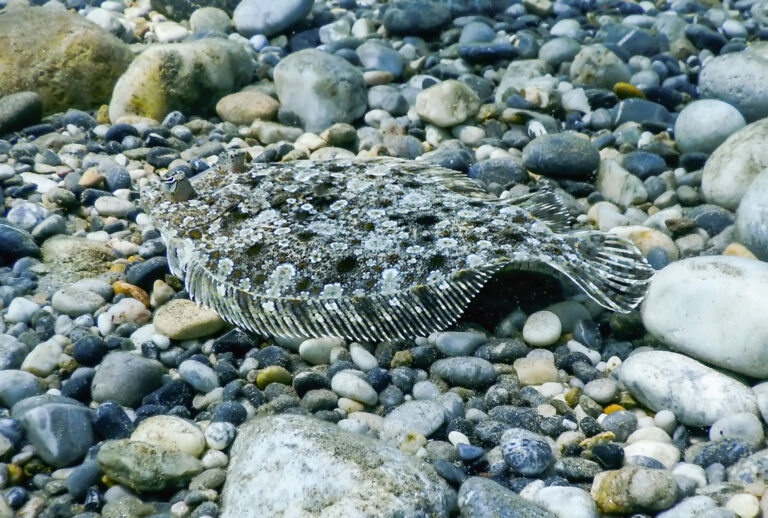Platichthys flesus

The flounder, also known as the plaice, can reach a body size of up to 50 cm. The body is brownish-green to gray in color, with yellow to orange spots scattered throughout (Schaefer 2018). Like all flatfish, Platichthys flesus lacks a swim bladder, and its body is strongly compressed, allowing it to move horizontally along the seabed. Both eyes are located on the upper side. The skin of the flounder is rough. While this species partially migrates into rivers, it returns to the sea for spawning (Brehm 1973).
Diet: Platichthys flesus primarily feeds on crustaceans, polychaetes, and oligochaetes, and older individuals also consume mollusks (Summers 1980).
Conservation status: According to the Red List of Germany, the flounder is classified as “not endangered.” It also holds the same global status in the IUCN Red List of Threatened Species, although the population trend is decreasing.
-
Brehm, A (1973)Das neue Tierreich nach Brehm. Gütersloh: PRISMA Verlag GmbH.
-
Schaefer, M (2018)Brohmer – Fauna von Deutschland. Ein Bestimmungsbuch unserer heimischen Tierwelt: Quelle & Meyer Verlag GmbH & Co.
-
Summers, R (1980)The diet and feeding behaviour of the flounder Platichthys flesus (L.) in the Ythan estuary, Aberdeenshire, Scotland. In: Estuarine and Coastal Marine Science 11 (2), S. 217–232.